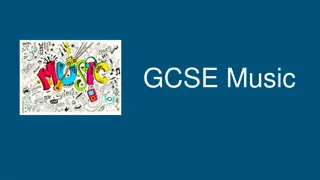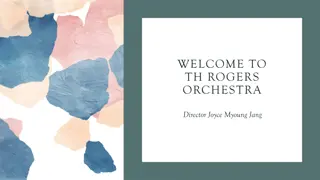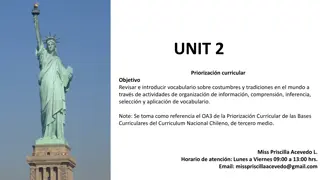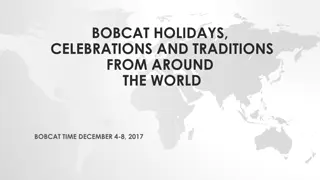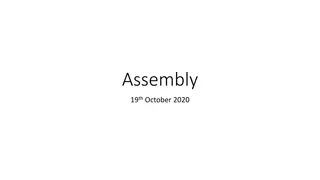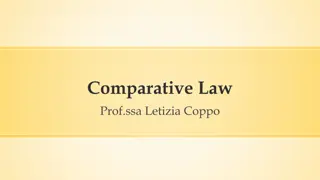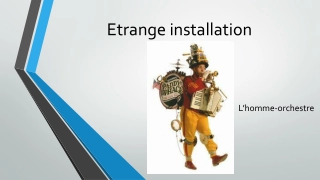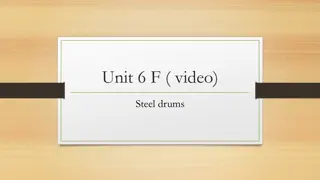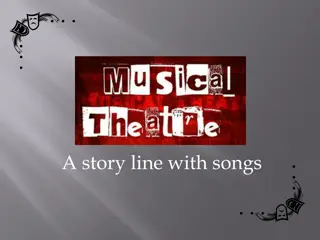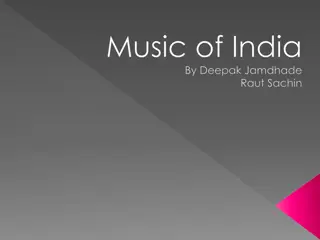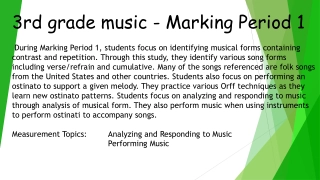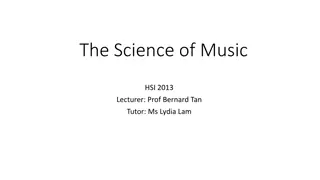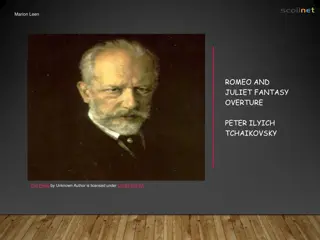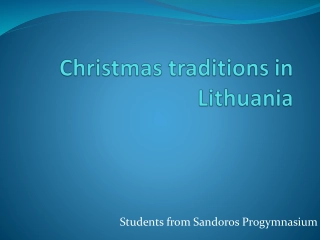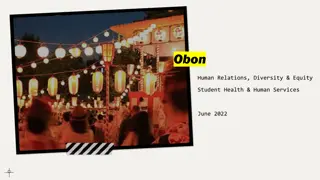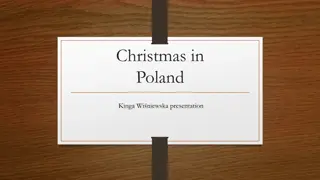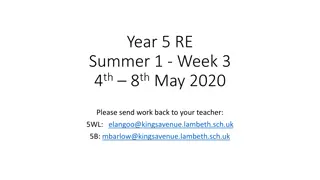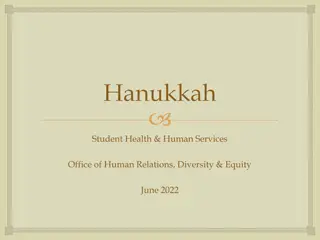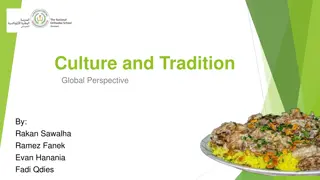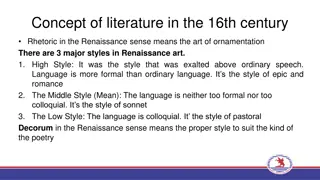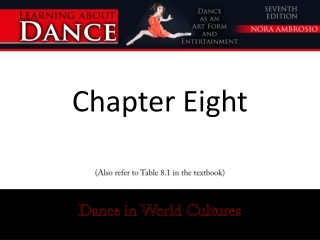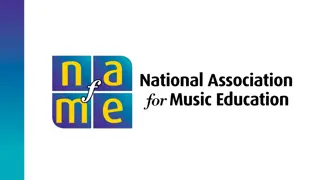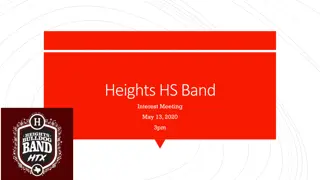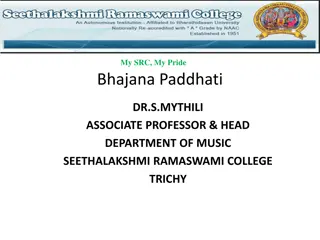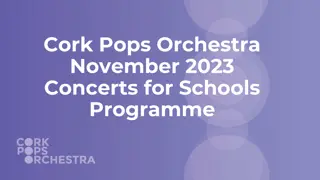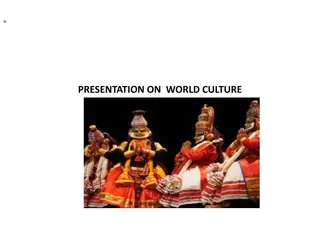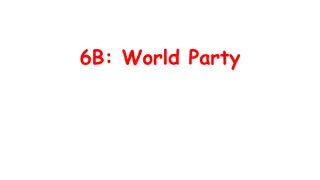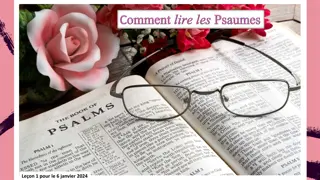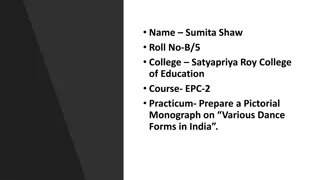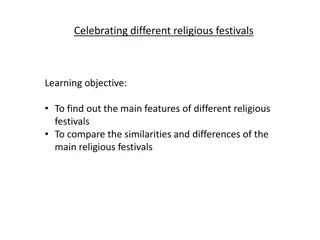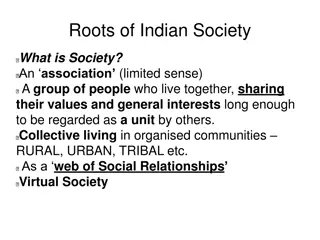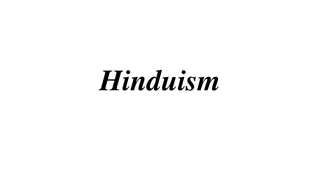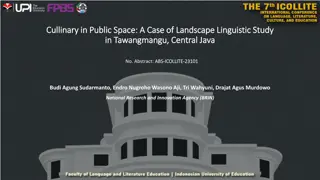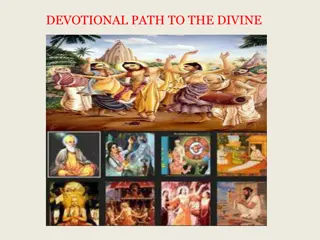Diverse Musical Traditions Around the World
Explore the rich rhythmic features of world music, from syncopation to cross-rhythms, and dive into the vibrant sounds of African music with its unique instruments like the Djembe drum and Balafon. Delve into the intricate layers of Indian classical music, with its mesmerizing Ragas, Drones, and Talas, showcasing instruments like the Sitar and Tabla drums. Experience the energetic beats of Bhangra music that originated in the Punjab region, embodying dynamic melodies and accompaniments. Immerse yourself in the global tapestry of musical expressions through these distinct traditions and sounds.
Download Presentation

Please find below an Image/Link to download the presentation.
The content on the website is provided AS IS for your information and personal use only. It may not be sold, licensed, or shared on other websites without obtaining consent from the author. Download presentation by click this link. If you encounter any issues during the download, it is possible that the publisher has removed the file from their server.
E N D
Presentation Transcript
RHYTHMIC features used in all World Music Syncopation Off-beat rhythms, syncopated rhythms Dotted Rhythms usually a pair of long then short beat patterns Polyrhythms Many rhythms played at the same time Cross rhythms - A cross-rhythm is the effect produced when two conflicting rhythms are heard together. Accented beats Different beats are played louder to make them stand out
AFRICAN Music features Performed at weddings, funerals, festivals and other public ceremonies Djembe Drum with 3 main sounds (Bass, Tone and Slap), played with the hands/fingertips. Dundun Lower pitched drum that often plays an ostinato rhythm giving the pulse. Payed with a stick. Talking Drum A drum that is able to change pitch by squeezing it Agogo/Bell Bell sound that sets the pulse for other performer Shakers hand percussion Balafon African Xylophone made from wooden bars and gourds, played with beaters Mbira or thumb-piano, made from thin metal bars which are plucked giving a unique sound Polyrhythmic texture different rhythms combined in layers Cross rhythms two against three feel Call & Response drumming or singing Master Drummer leads the group, plays the core rhythm as well as improvises and controls the structure of the music Strong sense of pulse/cyclic repeated sections
Listen & watch! African; https://youtu.be/jR0z_nMbwwI https://youtu.be/kZHfmgIb4mc Balafon & talking drum; https://youtu.be/qG3sxXII0TI Bite size; https://www.bbc.co.uk/bitesize/guides/z2xbg k7
INDIAN CLASSICAL MUSIC features 3 layers Raga, Drone & Tala. Improvised music- based on the Raga and Tala. Raga The name given to both the main melody and different scales used in Indian Classical music Tala The main drum pattern ( cycle ) used in Indian Classical Music. The Tala is cyclical (repeated). Tabla the pair of drums that are used in Indian Classical Music. A pair of drums played with hands and fingertips. Sitar a plucked string instrument used in Indian Classical music responsible for playing the melody Performance techniques on the sitar include slides, pitch bends, fast moving sections ( runs ), repeated notes Bansuri Flute a wooden flute made traditionally from Bamboo, is responsible for playing the melody Tambura/Tanpura Long-necked string instrument that is plucked. The notes are left to play/sustain accompanying the main melody. This is known as a drone (a harmonic device). Structure; Alap (slow melody & drone) Gat (table added) Jhala (grows more complex)
Listen & watch! Sitar https://youtu.be/wLAXfkK-DPg Tabla drums https://youtu.be/s7gigim5ZJo
BHANGRA MUSIC features Melody & Accompaniment texture Bhangra started in the Punjab region of India (now split between India and Pakistan). Chaal the basic repetitive bhangra rhythm, usually played on the dhol Dhol a double headed drum played with sticks Tumbi single string instrument thar often plays the chaal riff too. 4/4 Time Signature, steady tempo Bpm 140-195 Hoi shouts on beats 2 & 4 Hand claps Drum fill Harmonium/synthesizer, guitars, drum machines or drum kit, sampled sounds Singing in Punjab Pitch bends/microtones Simple harmony often just two chords! Structure; Verse/chorus/instrumental sections Riffs/repetitive melodies Interplay between lead vocalist & backing singers
Listen & Watch! Dhols; https://youtu.be/4KQrUDi8BXo Bhangra Dance https://youtu.be/_TMKYnvbfXs Bitesize; https://www.bbc.co.uk/bitesize/guides/zkjw7 p3
Traditional Eastern Mediterranean and Middle Eastern Folk Rhythms General Arabic features Mode an Arabic scale which contains microtones Microtones the notes between a semitone A Wazn a rhythmic pattern (similar to Indian Tala). There are hundreds! Doumbek a drum similar to a Djembe, played with hands/fingertips Oud a pear shaped string instrument, played with a pick (mainly Palestinian music) PALESTINIAN MUSIC features Palestinian music contains only melody and rhythm (No chords/harmonies) Improvisation is an important feature
Listen & Watch! Oud https://youtu.be/teFyiwtBjZs Doumbek https://youtu.be/vhfky-h_Rpw
ISRAELI MUSIC features Music for dancing at weddings and bar mitzvah celebrations 2/4 or 4/4 time signature Bass guitar crotchet Tonic & Dominant pulse Off-beat chords (played on 2nd& 4thbeat) Fast tempo Gradual accelerando Ornaments (pitch bends & grace notes) added to melody Clarinet, violin or accordion often play the melody
Listen & Watch! https://youtu.be/TqtSBQUS59I
GREEK MUSIC features Greek music- for dancing at social occasions Simple melodies with lots of ornamentation (e.g. melisma) Often add a parallel melody a 3rdabove Greek harmony uses diatonic major & minor chords Chords are usually on the off-beat (beats 2 & 4) Tonic & Dominant are emphasised by bass instrument Bouzouki a Greek stringed instrument, usually used as a melody instrument and for playing slides & tremolos in 3rds. Defi a hand drum with bangles attached Lots of string instruments bowed or plucked/strummed Wind instruments are similar to recorder & clarinet Irregular time signatures 5/8 or 7/8 Structure short sections, repeated
Listen & Watch! Bouzouki https://youtu.be/3XnOEiYKcjw Defi https://youtu.be/kvuyetxKNEw https://youtu.be/17Z1u6vA_3E (flick through to music bits!)
CALYPSO MUSIC features Lively music from the Islands of Trinidad and Tobago (Caribbean) Verse/Chorus/Instrumental structure Simple harmony Tonic, Subdominant, Dominant (e.g. C, F, G - if in C major). Major key tonality Melody & Accompaniment texture 2/4 or 4/4/ Time Signatures Syncopated rhythms Steel Band music made from old oil drums Steel pans are pitched alto (chords) tenor (melody) & bass pans Tremolo performance technique Bass guitar and Drum-Kit Any lyrics will be concerned with social issues or events
Listen & Watch! https://youtu.be/BWcwonrBw0w https://youtu.be/uyiJT6Fl3Ro https://www.bbc.co.uk/bitesize/guides/ztp49j 6
SAMBA MUSIC features Samba originates from Brazil and is commonly associated with street parties called carnivals. It uses lots of percussion instruments and is very lively and upbeat, as people often dance to it. 2/4 or 4/4 time signature Polyrhythms (layers of different rhythms) A huge range of percussion Improvisation the Master drummer sometimes improvises over the ostinato rhythms Structure no set structure. The master drummer decides where to change rhythms and breaks. However, sections will include Layered ostinatos (of different rhythms) All players playing the same rhythm (in unison) A Solo section A Call & response section The Master drummer Leads the group giving signals to change the music (rhythms, sections, tempo etc.) Call & Response A rhythm played by the leader, which is then copied by the rest of the group Repinique a small drum, often played by the leader of the Samba band. Tuned very high to be heard clearly. Whistle A samba whistle is used by the leader to give instructions and signal to the rest of the band. It often has three different pitches Surdo Large drum with a deep sound helps give the music a strong pulse, played with a soft beater. Agogo Bells like a cowbell but has a high and low-pitched bell. Plays complex and syncopated rhythms Also Shakers,Guiros and Claves.
Listen & Watch! https://www.bbc.co.uk/bitesize/guides/zrk9dx s Instruments; https://youtu.be/kbORVE2P2hg Master drummer/structure/improvisation https://youtu.be/8iCXTldi8Lo


